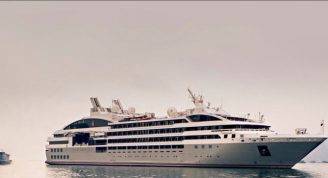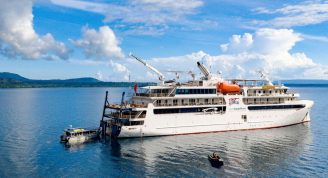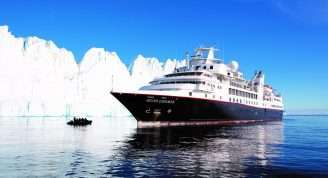Description
The Pacific Ring of Fire manifests itself in numerous places on the rim of the Pacific Ocean – but nowhere more dramatically and spectacularly than in the Russian Far East. Here the Pacific plate subducts under the North American plate and the resulting volcanic and geothermal activity has built a unique and amazing landscape.
Upwelling from the deep trenches formed by this action and currents around the many islands creates perfect conditions for seabirds and cetaceans. Consequently, this area is one of the richest in the world both in terms of the number of species, which can be seen, and their sheer abundance. For many, the undoubted highlight is the auks, and during this voyage it is possible to see up to 14 species including Tufted and Horned Puffins, Parakeets, Whiskered and Rhinoceros Auklets, as well as Spectacled and Pigeon Guillemots. Other seabirds regularly encountered include Laysan Albatross, Mottled Petrel, Fork-tailed Storm-Petrel, Red-faced Cormorant, Red-legged Kittiwake and Aleutian Tern.
For those keen on cetaceans we can reasonably expect to see Fin, Sperm, Humpback Whales as well as Orca (Killer Whale), Baird’s Beaked-Whale and Dall’s Porpoise. The region’s human history is equally interesting and fascinating. The original settlers were the Ainu and Itelmen. They were displaced with the arrival of the Cossacks in the 18th Century after the Explorer Vitus Bering put the region on the map. The Soviet empire encompassed the region and at the height of the Cold War, Russia’s formidable Pacific Fleet was based here. The secrecy surrounding the fleet resulted in the region being ‘closed’ even to Russians who were required to get special permits to travel to and within the area. It is only now, three decades since Perestroika, people can travel relatively freely here, although there is still very little in the way of infrastructure for visitors.
The region we explore on this expedition falls into three quite distinct and unique geographical regions: the Kamchatka Peninsula, the Commander Islands (the western extremity of the Aleutian chain of islands), and the Kuril Islands. Each region is very different, has its own story and, in many cases, localised plants and birds. Join us as we go in search of those people, plants, animals and birds that make this part of the Pacific Ring of Fire so special.

















